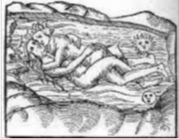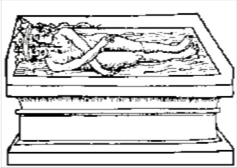Recovery from internet pornography addiction can accomplish a lot in just a few sessions. Dreamwork can aid in such work. Sometimes managed care companies send me clients for short-term therapy, and this brief story excerpted from my book Dreamwork and Self-Healing is an example of what can happen.
Recovery from Internet Pornography Addiction
A man named Steve, thirty-three, came to see me about problems he was having with his girlfriend Rita, who was furious at Steve because he’d had an affair. For several months they’d been dealing with the angry aftermath. Steve felt remorseful about hurting Rita, but he was still sexually restless, spending hours every night looking at pornography on the Internet. He felt that he couldn’t stop himself. Now Rita was angry about that too. In this example, a brief dream fragment elicited my own associations and a spontaneous commentary on his situation. Steve dreamed:
At a sporting event, maybe a bowling or pool tournament. The champ is retiring.
Bowling or pool reminded Steve of hanging out in bars with his buddies. The champ reminded him of bragging to friends about his sexual escapades. It also reminded him of the character of bartender Sam Malone (from the television show Cheers), who was a notorious, unattached Don Juan.
I said, “The part of you that identifies with the Great Lover needs to retire. Your whole relationship to sex and pornography seems out of balance. Our culture and mass media pump up everyone with constant stimulation so you feel like you’re missing out if you don’t experience hot, screaming sex every day. You feel like a loser if you’re not out every night dancing half naked in a nightclub, throbbing like electric jello. But it’s not realistic. The alternative is to deal with your disappointment and sadness about the relationship, about not having as much intimacy as you want with Rita. The question is, what will you grow in the garden of your disappointment? You can spend hours searing your eyeballs looking at pictures in cyberspace. That’s okay, but I think you can do better for your life. Perhaps we can imagine other ways to feel a sense of aliveness.”
Steve said, “Rita wants to put some energy into buying a house. That might be interesting.”
“You have to decide whether the champ is in the ring or out of the ring. Because all the energy you put into thinking about other women becomes part of the field of the relationship. Rita picks up on it; she feels it. What if you eliminate that? It will change the home, and the emotional field around you. Disarm yourself so there’s nothing for her to not trust. If you really want to make this relationship work, I think this is where you need to begin.” The champ retiring was a significant internal event for Steve.
 On my office coffee table that day, I had a book depicting the Rosarium series of alchemical illustrations. These pictures represent a sequence of recurring psychological events or archetypal situations. I showed Steve two pictures that I thought were of special interest. In the fifth image, the King and Queen are shown making love. This symbolizes how we embrace our object of desire, and seek union with it; we merge with our anima or animus (Edinger, 1994a, pp. 58, 62). We are the lovers uniting.
On my office coffee table that day, I had a book depicting the Rosarium series of alchemical illustrations. These pictures represent a sequence of recurring psychological events or archetypal situations. I showed Steve two pictures that I thought were of special interest. In the fifth image, the King and Queen are shown making love. This symbolizes how we embrace our object of desire, and seek union with it; we merge with our anima or animus (Edinger, 1994a, pp. 58, 62). We are the lovers uniting.
 The sixth Rosarium picture then depicts the lovers lying together in a tomb. After making love, they lie next to each other, silent and depressed. They look as if they’ve died. The feeling of passion has ebbed. We undergo a psychological death, a loss of connection with the energy of desire. Edward Edinger commented:
The sixth Rosarium picture then depicts the lovers lying together in a tomb. After making love, they lie next to each other, silent and depressed. They look as if they’ve died. The feeling of passion has ebbed. We undergo a psychological death, a loss of connection with the energy of desire. Edward Edinger commented:
[T]his is an image of the mortificatio: . . . It’s the theme of marriage and death, marriage being followed by death or someone being married to death, or linkage between the two one way or another. . . . It is the typical fate of lovers to die. . . . [T]he opposites die in the course of giving birth to the higher totality that transcends them. . . . [T]he ego has been united with the desired object and then experiences disillusionment, . . . [or] failing to get what one wants, [or] being frustrated. (Edinger, 1994a, pp. 68, 70, 72)
This depicts how we need to tolerate the depressed phase of the relational cycle, the experience of disillusionment with our spouse, lover, or therapist. In a therapeutic relationship, negative transferences occur. This disillusioned phase has to be endured until something is reborn—a renewed feeling of excitement, desire, and connection. In our relationships we experience the pulsating cycles and tidal movements of nature, rising and falling tides, waxing and waning sexual energies. Steve learned to accept the limitations of his partner but also tried to focus on enhancing their relationship. He began to read books on purchasing a home, which made Rita very happy, and they became more closely knit as they began discussing this shared goal and how they could realize it. Facing the moment when we feel that love has died, sometimes it springs back to life like wildflowers.
Excerpt from Dreamwork and Self-Healing, by Greg Bogart (Routledge, 2009). Copyright Greg Bogart. All rights reserved.